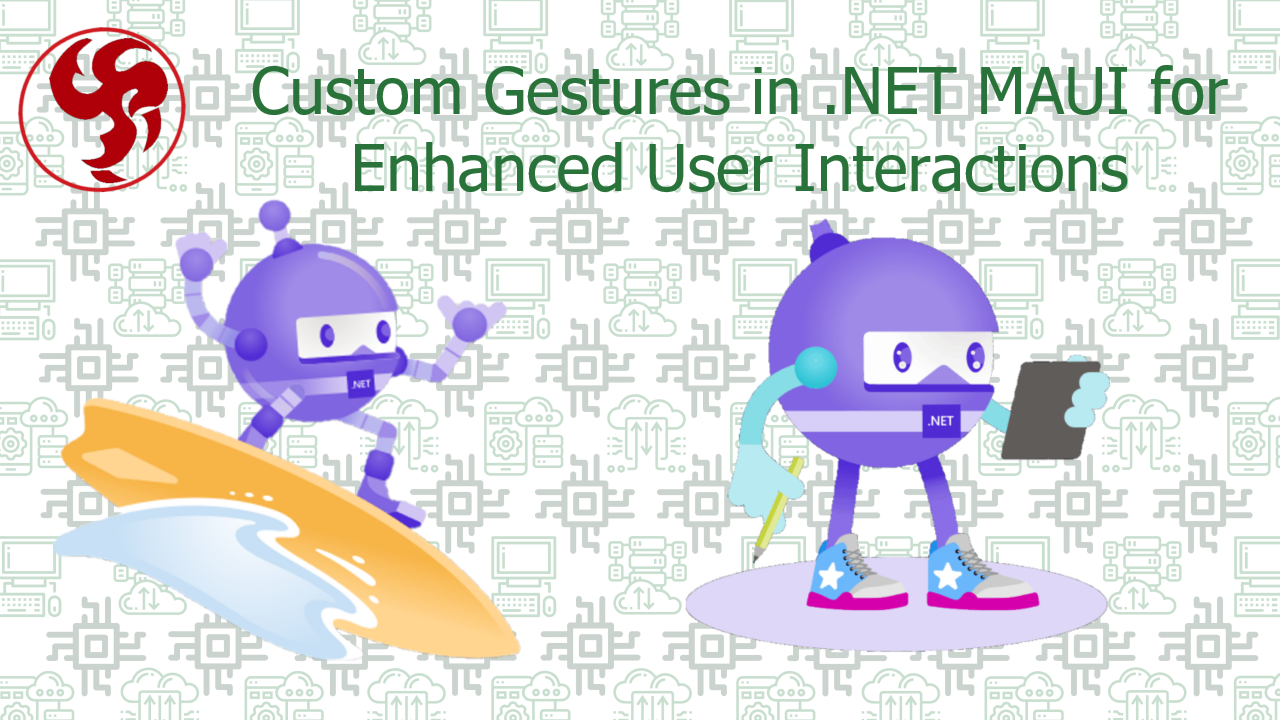Custom Gestures in .NET MAUI for Enhanced User Interactions
Introduction
In today’s mobile-first world, touch gestures are a cornerstone of user interaction. Whether it’s swiping through images, pinching to zoom, or performing multi-finger gestures, users expect apps to respond intuitively to their touch inputs. While .NET MAUI provides built-in gesture recognizers for common interactions like taps, swipes, and pinches, many apps require custom gestures—such as multi-touch drags, complex swipe sequences, or gesture combinations—to deliver a truly immersive experience.
This guide will take you deep into custom gesture recognition in .NET MAUI, covering:
The fundamentals of gesture handling in .NET MAUI
How to create custom gesture recognizers from scratch
Implementing multi-touch and complex gesture combinations
Integrating gestures with UI elements for dynamic interactions
Advanced use cases for gaming, drawing apps, and more
By the end, you’ll have the knowledge to build highly interactive, gesture-driven apps that stand out in the mobile landscape.
1. Understanding Gesture Recognition in .NET MAUI
Built-in Gestures in .NET MAUI
.NET MAUI simplifies gesture handling with the GestureRecognizer class, which supports the following common gestures out of the box:
| Gesture Type | Description |
|---|---|
| Tap | Single or double taps (e.g., button clicks) |
| Swipe | Horizontal or vertical swipes (e.g., navigation) |
| Pinch | Pinch-to-zoom (e.g., image scaling) |
| Pan | Dragging an element (e.g., moving a UI component) |
| LongPress | Press-and-hold actions (e.g., context menus) |
These are sufficient for basic interactions, but what if your app needs:
Multi-finger gestures (e.g., two-finger rotation)
Custom swipe patterns (e.g., diagonal swipes, circular motions)
Chained gestures (e.g., swipe + long press to trigger an action)
For these scenarios, we need custom gesture recognizers.
2. Building a Custom Gesture Recognizer in .NET MAUI
Step 1: Creating a Base Gesture Recognizer
To implement a custom gesture, we start by subclassing GestureRecognizer and defining our own gesture detection logic.
Step 2: Implementing a Drag Gesture Recognizer
A common use case is detecting a drag gesture (e.g., moving an element across the screen). We can track the initial touch point and compare it to the current position:
Step 3: Detecting Multi-Touch Gestures
For multi-touch interactions (e.g., two-finger zoom), we track multiple touch points and calculate their relative movement:
3. Integrating Custom Gestures with UI Components
Step 1: Attaching a Gesture Recognizer to a View
Once we have a custom gesture recognizer, we can attach it to any View (e.g., BoxView, Image, Frame):
Step 2: Combining Multiple Gestures
We can combine swipe + pinch for richer interactions:
4. Advanced Gesture Use Cases
Case 1: Two-Finger Rotation Gesture
For apps requiring rotation gestures (e.g., image editors), we can calculate the angle between two touch points:
Case 2: Chained Gestures (Swipe + Long Press)
For sequential gestures, we can track multiple steps before triggering an action:
5. Performance Considerations & Best Practices
Optimize Gesture Handling: Avoid heavy computations in gesture callbacks to prevent UI lag.
Use Platform-Specific Tweaks: Some gestures (e.g., high-frequency touch events) may need platform optimizations.
Test on Real Devices: Gesture behavior can vary across Android, iOS, and Windows.
Provide Visual Feedback: Use animations to confirm gesture detection (e.g., highlight on swipe).
Conclusion
Custom gestures in .NET MAUI unlock powerful, intuitive interactions that go beyond standard taps and swipes. Whether you're building:
Drawing apps (multi-touch gestures)
Games (complex swipe combos)
Productivity tools (drag-and-drop, pinch-to-zoom)
…custom gesture recognizers give you the flexibility to create highly responsive, engaging user experiences.
